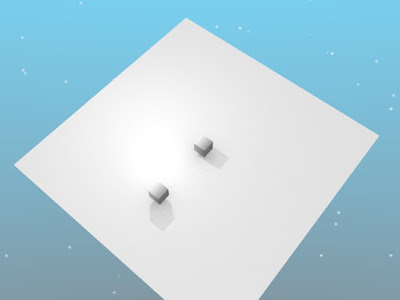[Motion signals deflect relative positions of moving objects]
The perceived relative position of a moving object is frequently shifted as compared to the relative position of the object in the real world. The illusions have traditionally been explained by temporal models that influence the perceptual latency of visual objects. However, another compelling theory has recently been proposed on the basis of spatial models that directly influence the coded location of visual objects. In this study, spatial models were further supported by three different types of illusions composed of apparent motions, in which the perceived relative positions of stationary but apparently moving objects were shifted. One of three illusions was developed as a novel type of illusion in this paper (kebab illusion). The relative position shift of a stationary object suggested that spatial models play important roles on assignment of position of moving object as well as temporal models. A mechanism (delta model) that integrated temporal and spatial models is also discussed.
Keywords: flash-lag effect; line motion; prediction; postdiction; kebab illusion;
Watanabe, E., Matsunaga, W., and Kitaoka, A., Motion signals deflect relative positions of moving objects, Vision Research 50, 2381-2390 (2010)
[Link to PUBMED]
Additional notes:
The delta model referred in this paper is conceptually equivalent to the predictive coding theory (below) for the cerebral visual system. The model is the general extension of the idea of predictive coding to the entire brain. This theory will explain the cause of many illusions. In the above-mentioned 2010 paper, we are trying to explain illusion by delta model or predictive coding. This attempt will be one of the earliest descriptions about relationship between illusions and predictive coding.
Predictive coding in the visual cortex: a functional interpretation of some extra-classical receptive-field effects
Rajesh P. N. Rao & Dana H. Ballard
Nature Neuroscience volume 2, pages 79–87 (1999)
The perceived relative position of a moving object is frequently shifted as compared to the relative position of the object in the real world. The illusions have traditionally been explained by temporal models that influence the perceptual latency of visual objects. However, another compelling theory has recently been proposed on the basis of spatial models that directly influence the coded location of visual objects. In this study, spatial models were further supported by three different types of illusions composed of apparent motions, in which the perceived relative positions of stationary but apparently moving objects were shifted. One of three illusions was developed as a novel type of illusion in this paper (kebab illusion). The relative position shift of a stationary object suggested that spatial models play important roles on assignment of position of moving object as well as temporal models. A mechanism (delta model) that integrated temporal and spatial models is also discussed.
Keywords: flash-lag effect; line motion; prediction; postdiction; kebab illusion;
Watanabe, E., Matsunaga, W., and Kitaoka, A., Motion signals deflect relative positions of moving objects, Vision Research 50, 2381-2390 (2010)
[Link to PUBMED]
 |
| flash-lag effect |
Additional notes:
The delta model referred in this paper is conceptually equivalent to the predictive coding theory (below) for the cerebral visual system. The model is the general extension of the idea of predictive coding to the entire brain. This theory will explain the cause of many illusions. In the above-mentioned 2010 paper, we are trying to explain illusion by delta model or predictive coding. This attempt will be one of the earliest descriptions about relationship between illusions and predictive coding.
Predictive coding in the visual cortex: a functional interpretation of some extra-classical receptive-field effects
Rajesh P. N. Rao & Dana H. Ballard
Nature Neuroscience volume 2, pages 79–87 (1999)
Comments
Post a Comment